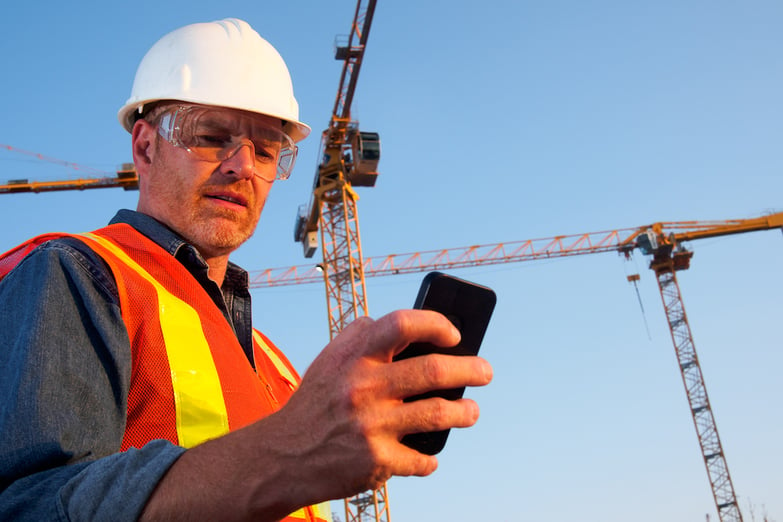Back to articles
Construction sector building on wireless tech foundation

For thousands of years, humans have been building houses, roads, bridges, and markets that allowed us to live safer and more productive lives. But the tools of the trade have lacked the capability to let us do so as effectively as possible.
Now, belatedly but perhaps inevitably, smart connectivity is helping to lay the foundations for improved productivity and worker safety in the all-important architecture, engineering, and construction (AEC) industry. To that end, technology companies are introducing a wide range of innovative products to power connected construction.
The critical role of the building sector
From humble beginnings, construction has culminated in giant cities where 55 percent of the world’s population resides, a figure, according to the UN, that’s set to rise to 68 percent by 2050.
Today, the AEC sector is the largest in the global economy, responsible for employing around seven percent of the world’s working population, and about 13 percent of world’s GDP ($10 trillion) according to analyst McKinsey. And because around 50 percent of a construction project’s total cost relates to labor, skilled workers are the key to a project’s success.
Tech provides a solution to productivity challenges
Yet despite its importance, the construction industry has earned a reputation for being slow to innovate. As a result, the sector has often suffered from severe productivity challenges.
Technology offers a solution for raising the game. The signs are promising; digital adoption is accelerating on the back of strong demand for more infrastructure, a shortage of skilled labor, and increased expectations for data transparency and integration. An estimated $50 billion was invested in AEC tech between 2020 and 2022—85 percent higher than the previous three years—according to the latest McKinsey research.
Growth is being driven by increased uptake of the IoT, big data analytics, and AI, as well as a greater emphasis on sustainability. That’s allowing companies to take advantage of real time field reporting by connecting and tracking materials, equipment, and workers at the construction site.
Enhanced productivity boosts the bottom line
A construction project manager can now access a management platform with real-time project data and task alerts. This information enables fast decisions and speeds up workflows from the back office to the field, and onwards to the extended project team. And it removes the project silos that limit collaboration. These practices will also lead to improved margins.
Connected construction offers several other advantages over manual operations. For one, it can improve communication and transparency on the worksite; for example, consider a worker reporting back to a supervisor via a smart device, or sensors and tags embedded in equipment providing key updates such as the location and status of a concrete mixer. Or connected vehicles like dump trucks, backhoe loaders, excavators, and mobile cranes, could enable location detection and monitoring of usage via embedded cellular and GNSS technology.
Monitoring essential construction materials
A critical requirement for the construction industry is monitoring essential construction materials like concrete for quality control. This requirement led German company ConcR to develop a material monitoring solution that analyzes the characteristics of concrete as it cures, to check when it’s safe to proceed with the next stage of construction. The ConcR Sensors are attached to a rebar (a reinforcing steel bar used to strengthen concrete slabs) before the concrete is poured. The sensors provide key insights into the strength and durability of the cement or concrete by monitoring temperature, relative humidity, residual moisture, pH, and chloride levels.
The Nordic nRF9160 SiP-powered cellular IoT solution provides data across the lifecycle of concrete and screed—a levelled layer of material applied to a floor or other surface—starting from construction until 25 years in operation. With this information, planners, engineers, contractors, and owner-operators gain data-informed insights about the condition of construction materials throughout their life.
- Read more: Making sense of the connected world
Putting worker safety first and foremost
Beyond productivity gains, technology is essential to the safety of skilled construction workers on hazardous worksites.
For example, by using sensors integrated into existing personal safety equipment such as hard hats, WakeCap Technologies’ solution connect workers across entire job sites.
WakeCap is a wearable product designed to overcome the challenge of “digitizing the construction sector’s field logistics and workforce”, according to the company. In operation, the hard hat-worn sensors track the wearer’s location and record knocks to the hard hat. In addition, WakeCap’s analytics compare the on-site work crew timing with staffing and project management plans, highlighting any unexpected problems early - helping avoid delays and extra costs.
Thanks to wireless tech, construction equipment, vehicles, devices, personnel, and locations will communicate and work together using emerging connectivity platforms. Connected construction is here and the world is better for it.


